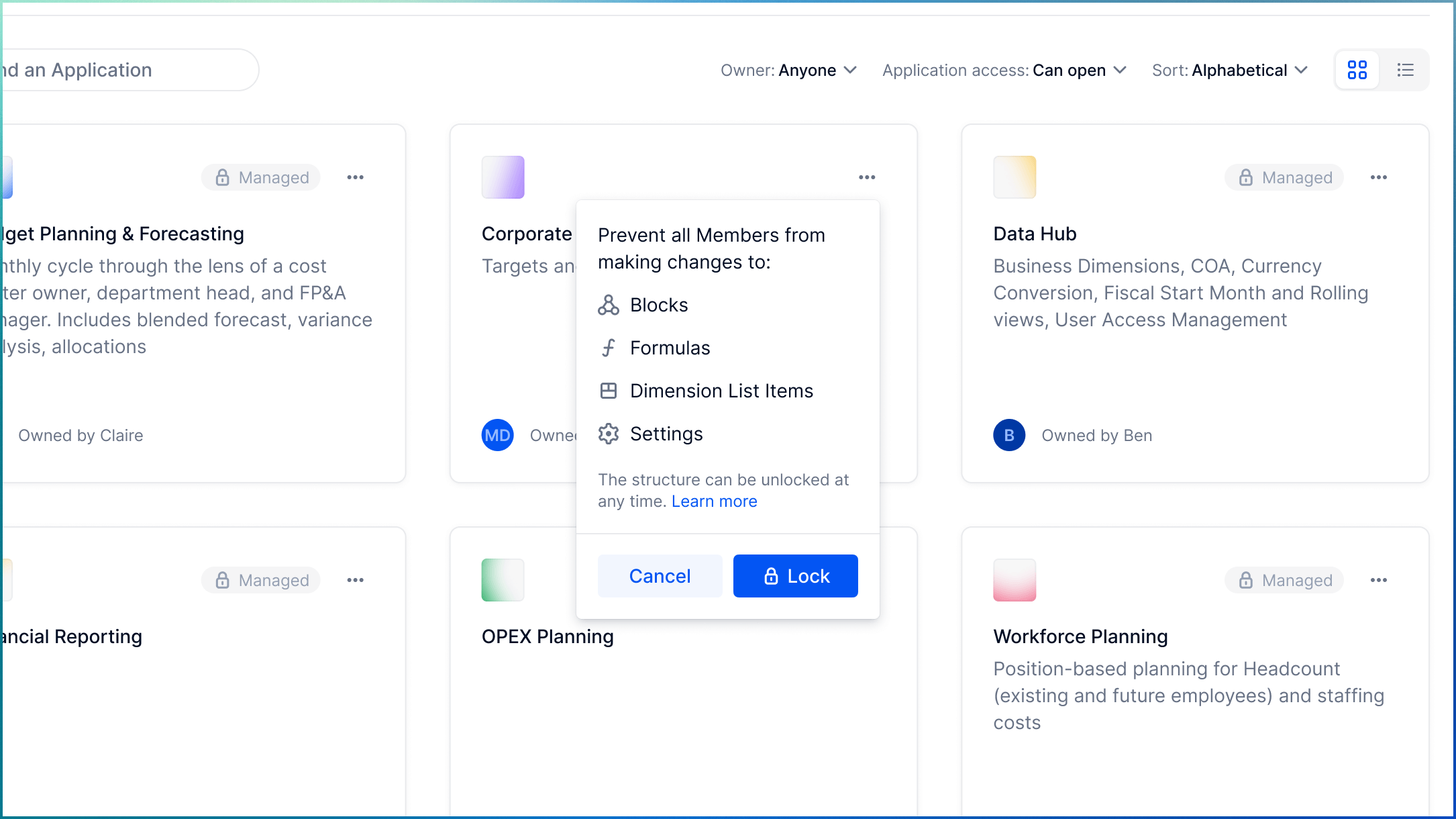
We talked about making structural changes in the Dev environment - but what’s considered a structural change?
There are numerous changes that are seen as structural. This means that they’re mostly not allowed in the Prod environment, but they are allowed to be implemented in the Dev environment before being pushed to Prod.
The standard Enterprise plan on Pigment includes the Dev and Prod environments by default. For more information on adding a third environment, or increasing your data volume in T&D, contact your Pigment CSM.
Each type of change and associated behavior in Dev and Prod environments is documented here in the article: Understand Test & Deploy for Pigment Features
As a general guideline, a structural change in a model is anything that impacts your model structure. For example, Application settings, Block structures or formulas: these are changes that are managed by T&D.
All changes handled by App Lock are considered structural:

Specifically, all structural changes are considered changes protected by the following permissions:
- Display Application
- Configure Application
- Configure Calendar
- Create & delete folders
- Configure Blocks
Additionally, changes in Connected Dimension Lists are also managed by T&D and correspond to changes protected by the following permissions:
- Add List Items (except for Dimension Lists with disconnected Items)
- Remove List Items (except for Dimension Lists with disconnected Items)
- Reorder List Items (except for Dimension Lists with disconnected Items)
For more information, see Manage Data Changes in Dimension Lists.
Finally, T&D also manages, to a certain extent, View features changes protected by the following permissions:
- Configure Views
- Configure Boards
For more information, see Understand Test & Deploy for Pigment Features.

